► CAR’s debrief on the Bugatti Tourbillon
► V16 hypercar is hybrid hedonism
► New Équipe Pur Sang sports pack revealed
Bugatti has unveiled a performance pack for the Tourbillon… as if that car needed any MORE. It’s called the Équipe Pur Sang package, which translates to ‘thoroughbred team’ – and it’s actually more of a set of visual trimmings more than anything else.
That said – what a set of visual trimmings. So much so that the pack features an eight-pipe exhaust package, almost as if someone’s reversed a Tourbillon into a pipe organ. A new front splitter and revised rear wing are designed to further improve aerodynamics. New super lightweight wheels feature, too, which Bugatti claims improve air flow to the rear radiators by eight per cent.

Inside, the Équipe Pur Sang models include black upholstery and unique stitching, as well as Alcantara-upholstered performance seats.
Of course, we say ‘you’ can now have this spec, but we likely predict that only a handful will ever be able to order such a thing.
Want to know more about the ‘standard’ Tourbillon? Keep reading…
Bugatti Tourbillon: V16 hybrid hedonism
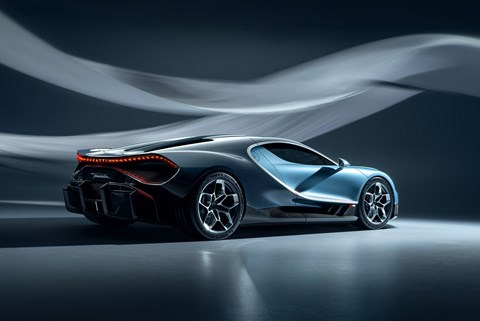
The third 21st century Bugatti, named Tourbillon, will go on sale in 2026 priced at €3.8 million apiece. Just 250 will be built and, even at that price, CAR predicts the kind of riot usually reserved for Taylor Swift tickets. Why? Because in the entire history of a marque famous for engineering eccentricity and excess, the all-new Tourbillon sits top of the pile as the maddest of them all.
A 1775bhp plug-in hybrid with three e-motors and a Cosworth-developed, 8.3-litre V16 engine with precisely no turbochargers, it is faster, smarter and prettier than the outgoing Chiron. From its gemstone-encrusted driver’s instruments to its 276.5mph top speed, it is also testament to the imagination and creative willpower of one man, Bugatti Rimac CEO Mate Rimac.
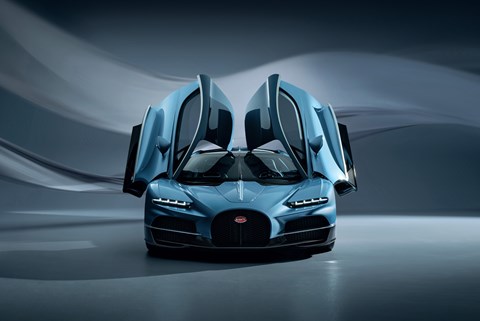
Why isn’t the Tourbillon electric?
Good question. Rimac: ‘Early on there was a lot of discussion, particularly with the management, with Porsche. They were insistent the car had to be electric. EV would have been the obvious and easy thing to do. With the Nevera I already had a 1900bhp electric hypercar, and we could have easily transferred that technology or, as we showed with the [Pininfarina] Battista, re-skinned it – easy-peasy. But it was clear to me this was the wrong way for Bugatti, and I had to fight like hell to do another combustion engine. I wanted to elevate it to a higher level. It comes back to the same words that drove Romano Artioli [orchestrator of Bugatti’s second age, in the early ’90s] and Ferdinand Piëch: if it is comparable then it is not a Bugatti. It’s a simple sentence but a clear brief. A Bugatti has to be unique.’
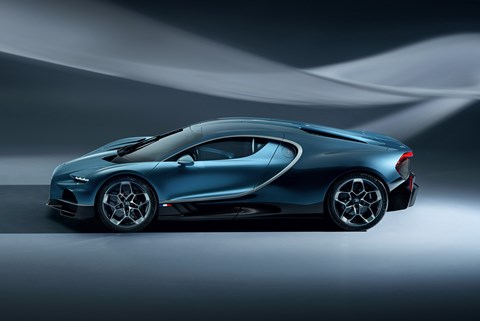
The Tourbillon is certainly unique. More than half of the car’s total power output comes from the V16, the rest being the product of a 28kWh battery, a motor out back and one on each front wheel. The engine weighs in at 252kg, some 150kg lighter than the old W16 – a clue to the subtle but significant shift in philosophy Mate has brought about at Molsheim. Deeply impressive but oddly anodyne to drive, the Veyron and Chiron were not touchy-feely cars. Their performance was also the product of brute force over drag, weight and the other downsides of rampant mechanical complexity.
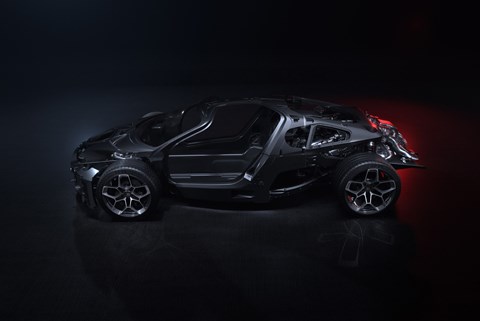
Keep those performance details coming…
Mate’s first Bugatti is a little leaner (power is nearly 300bhp up on the Chiron but kerbweight is down), a little smarter (minimising drag was an obsession) and more emotionally resonant (an astonishing engine racket, plus more tactile steering), all while doubling down on the brand’s reputation for barely conceivable numbers: 0-62mph in two seconds flat, 0-124mph in less than five, 0-248mph in less than 25 seconds and 276.5mph, erm, where conditions permit.
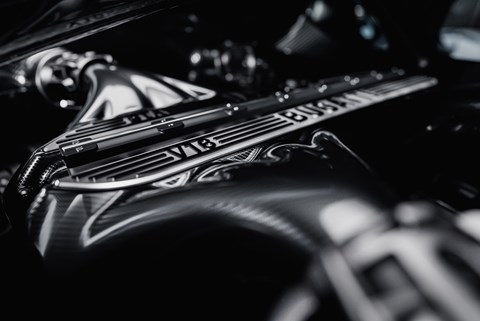
The V16 features a 90° bank angle, 92mm x 78.55mm bore and stroke dimensions and a punchy 14.5:1 compression ratio that calls to mind the good old pre-turbo days. The vee angle brings sweet balance and the crossplane crank (versus a flatplane arrangement) a sense of near-limitless torque. There are no turbos because the engine’s here to provide noise and theatre, and turbochargers tend to dull both. Their additional grunt isn’t required either, thanks to the electric powertrain.
What’s the Tourbillon like inside?

As wild as the engine is the cockpit, complete with analogue instrumentation inspired by luxury watches and a fixed-hub steering wheel. There are also no permanent screens. The logic is flawless: the big-screen race is a zero-sum game and, by definition, the digital cannot be timeless. Mate Rimac: ‘We wanted to create something that wouldn’t date even though we are trapped in the technology of our time.’
The instruments comprise more than 600 parts (some in titanium; others in gemstones…), weigh just 700g (less than half that of their digital equivalent, Mate insists) and work with the kind of eerie precision that comes of tolerances as fine as 5 microns. The speedometer’s mechatronic assembly alone comprises 250 parts.
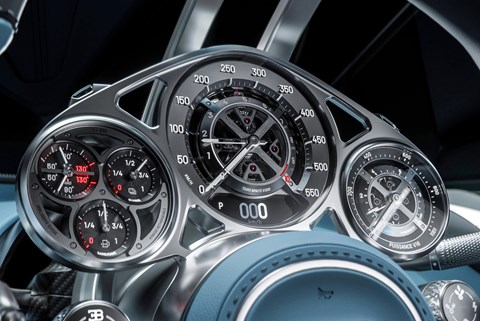
‘We wanted to keep the value in the car, and to countersteer the trend of the industry,’ explains Rimac. ‘In a digital world of more and more screens you all converge on the same thing.’
The Tourbillon certainly isn’t more of the same thing. A labour of love still in frenzied development, it’s the car Bugatti needed to build – and the car it simply couldn’t build while it remained an integral part of the VW Group.